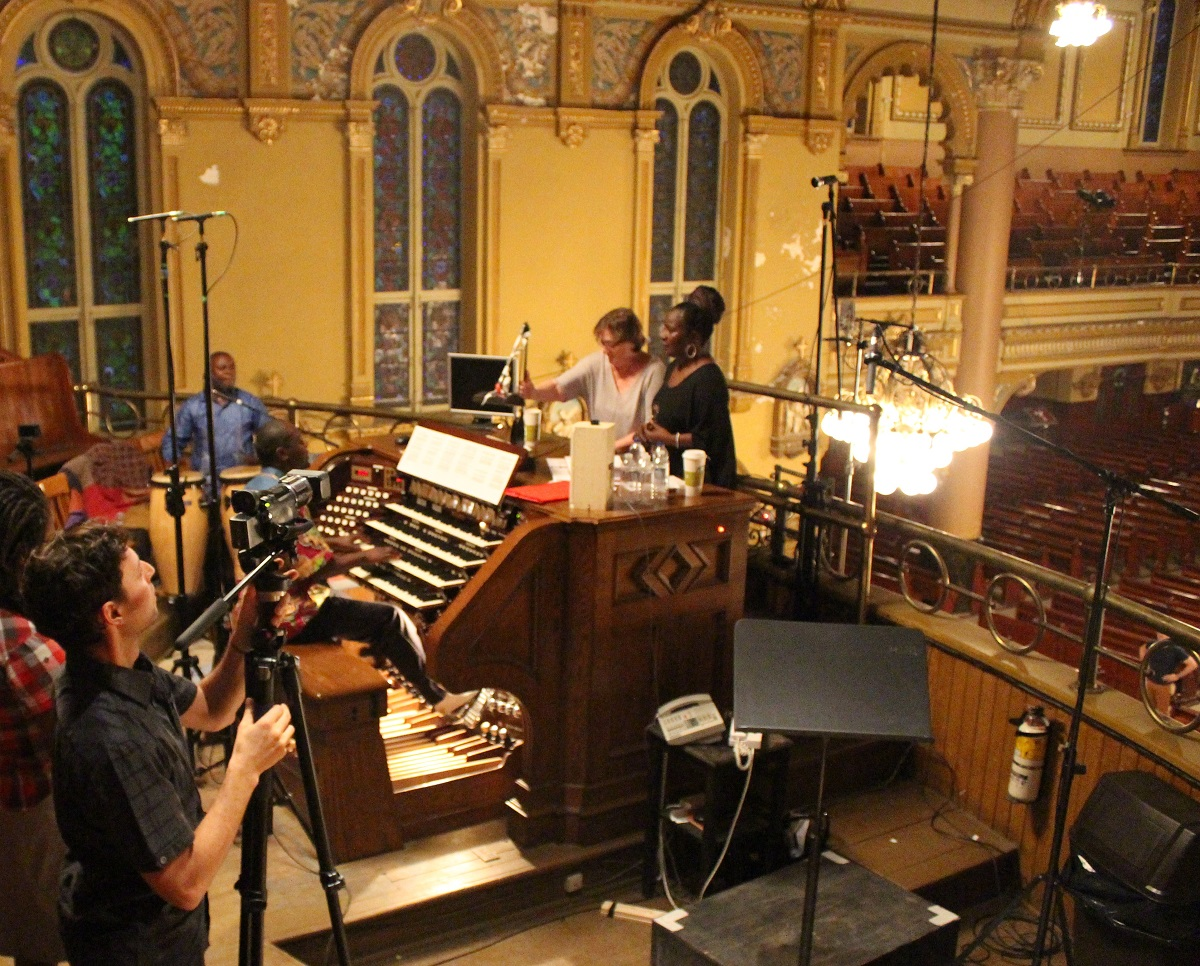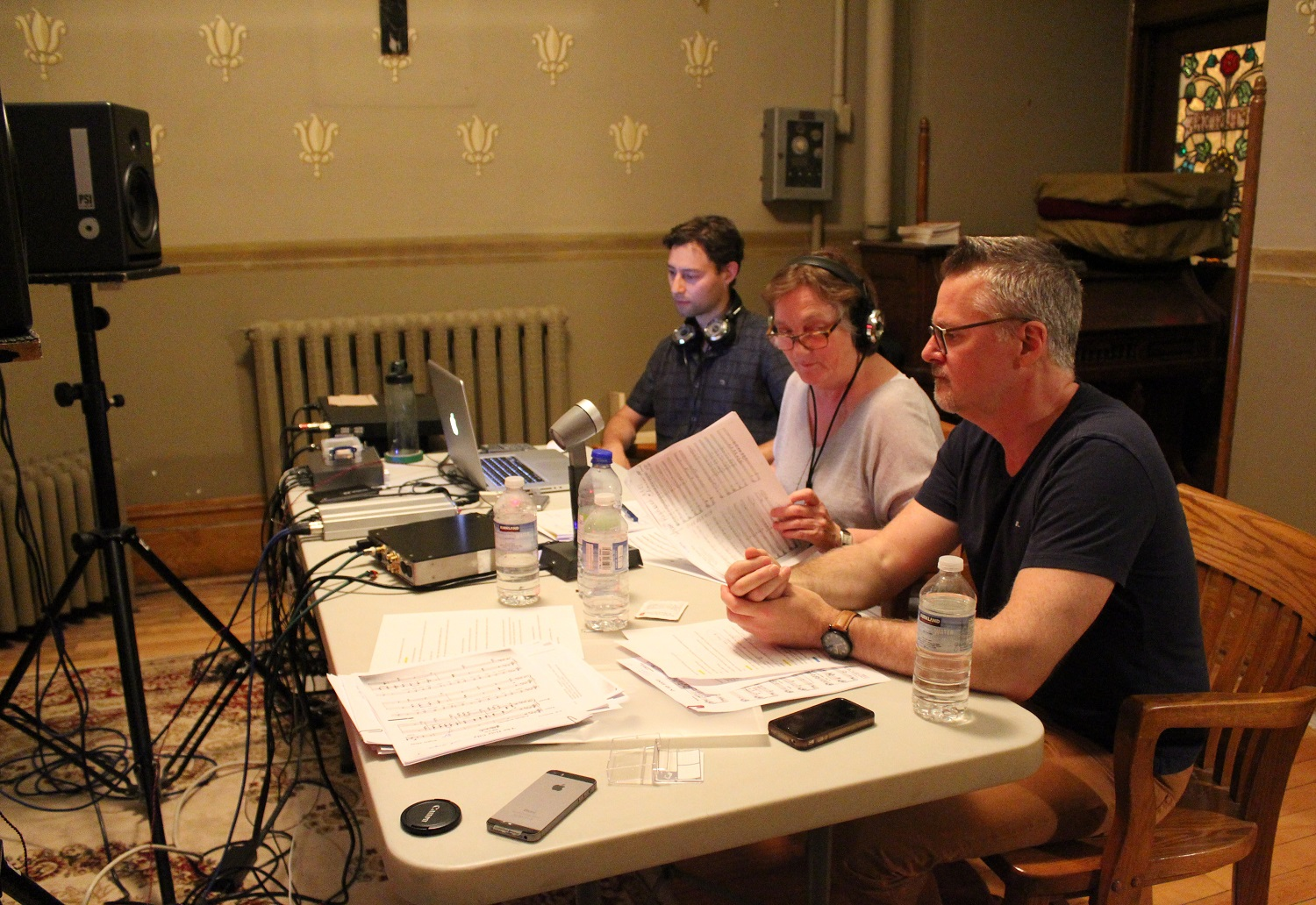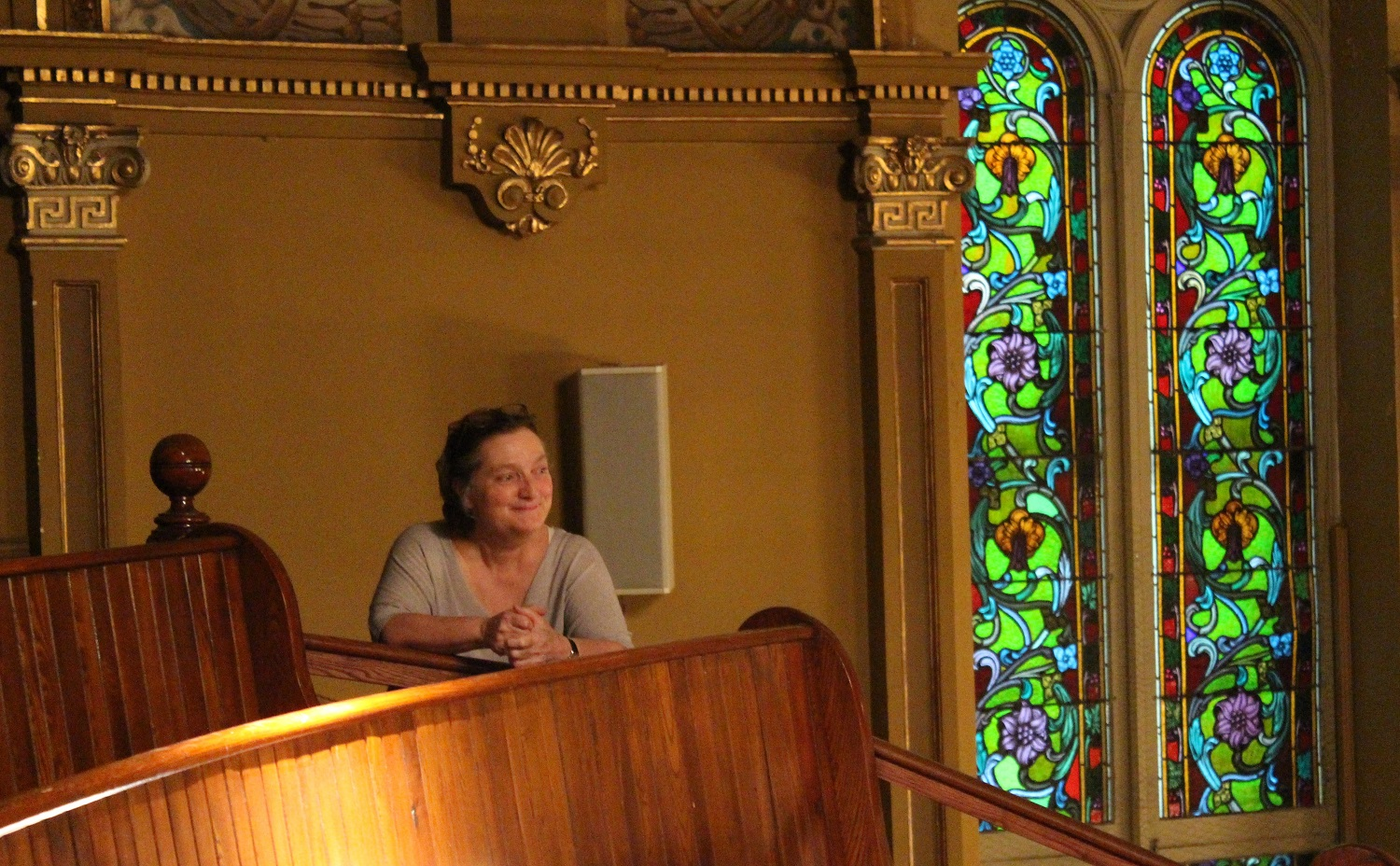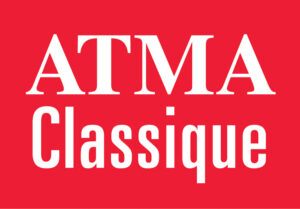On the occasion of ATMA Classique’s 20th anniversary, we thought it would be a great opportunity to speak with president Johanne Goyette. Since founding ATMA Classique in 1994, Johanne divides her time between record producing, managing the company, and artistic planning. The hallmark of the ATMA brand is her distinctive flair and production style. We caught up with Johanne over the summer between recording sessions.
Where were you born?
Cowansville, in the Eastern Townships south of Montréal.
How did you first become interested in music?
Neither of my parents was musical, but they gave me piano lessons, and prior to that some singing and music lessons with Soeur Jeanne de France, a nun teaching at my school . At that time nuns were very dedicated to music teaching and we had lessons every day … solfège, etc. It was a way to develop musical gestures – how to sing, how to read music. I was quite young, and I remember going to mass with my father. Already then I was able to recognize the notes and sing them using solfège. I think I had perfect pitch when I was young – I was conscious of the pitches the organ was playing.
What instruments did you study?
I took piano lessons for my whole childhood and studied piano and l’Université de Montréal, and one of my teachers was Antoine Reboulot. He was from the school of important French organ players and was also a pianist and piano teacher. I think he was intelligent enough to see that I wouldn’t make a career as a pianist, so he didn’t make me do lots of scales and boring things. He focused on musicality and I would say that he’s still living in me. Because when I’m recording, I’m in the mode of having to judge things very quickly and I think he was a great influence, a good teacher. We don’t have too many teachers who will continue to nourish us all our lives, but he was one of those.
During my studies in Montréal, we were studying music history and around the subject of Messiaen, I encountered the instrument ondes Martenot [an early electronic instrument invented by and named after French musician Maurice Martenot]. I fell in love with this instrument! It was taught at the Conservatoire in Montréal. I managed to take a few lessons here and there during university, and then I went to the Conservatoire to study ondes Martenot for a few years. In 2008, I recorded my old group of friends on ondes Martenot! [Messiaen – La Fête des Belles Eaux]
You were a producer at Radio-Canada for 14 years. How did that experience contribute to your role at ATMA?
Certainly working at Radio-Canada put me in contact with many aspects of music production. The rhythm of putting together programs of music and words was helpful. The contact with the announcers was important — – how to construct phrases to communicate simply, how to put music together with it, how to find a sense of flow in a programme.
Also, I had many recording experiences. I would say that the rhythm of that medium is interesting. It’s been helpful when I have to decide the programme order for a CD – it’s not something you can just do on paper. When you listen to a CD, you it’s not the same as listening to a whole concert program beginning to end. The experience is very different.
When you’re preparing for a CD recording session, what elements do you have to take into account? First of all, the choice of the recording space: I’ve been doing this for 20 years and I’ve been using Saint Augustine church in near Montréal as one of my recording spaces for 20 years – it sounds great, I’m very lucky. They leave us the keys and I don’t feel rushed — – they are great people. I also record a lot at Saint-Irénée (Le Domaine Forget) and some other halls and churches in Montréal. But the first question is always, where can we record this project? Depending on the space, I might rent acoustic drapes or platforms if it’s an orchestra. I use a lot of drapes now –– I’ve developed a complete set-up to adapt the acoustics of different spaces.
Also, if it’s a score that I don’t know, I learn it by listening to different versions on CDs . Sometimes I go to rehearsals. I like to see how musicians interact with each other – it’s always interesting. If I can’t go to a complete rehearsal, I’ll get the score and learn the music just to be able to read it very quickly while we’re recording. Of course, when I record with a conductor and it’s towards the end of the session and he asks if a section is covered, I have to be able to answer very quickly, in five seconds. Sometimes the musicians become tired and rely on you to run the session, so you have to be able to judge whether you have to interact or just listen to what they say and take notes.
 Johanne Goyette during a recording session for Marie-Josée Lord’s upcoming album, Amazing Grace (St-Jean-Baptiste, church, Montréal)
Johanne Goyette during a recording session for Marie-Josée Lord’s upcoming album, Amazing Grace (St-Jean-Baptiste, church, Montréal)
How else are you involved during recording sessions?
First of all, we do a sound check and we try to do it as quickly as possible, but sometimes it’s a long process because we can’t find the right sound. So we take the time to find the right sound. Musicians have many different opinions on the sound quality, so as the producer I have to have an opinion very quickly — – do you like it or not? If not, what is wrong, what can you try to change? You have to do this quickly because your ear will become tired. When you are in halls that you know, you start with microphone work and it’s easier. When you come to a new hall it can be tricky. We don’t have a “recipe.” I measure things, but I don’t automatically follow the measurement. First of all, the temperature or weather can change things: when it’s very humid, the sound it very different. You have to rely very much on your ears. That’s fun, I’m confident about that now.
Then we have to record the CD! We have three days to put one hour of music onto a CD. Over the three days, we take the best energy of all the takes. A live opera could last two hours and at the end of these two hours in concert, it will be great. But often if we record it, we see that towards the end there are some imperfections – pitch, togetherness, sound quality. In the recordings that I make and listen to, we care a lot about perfection of execution but we’re also looking for an energy that’s equivalent to a concert. We do everything two or three times, then we can repair the little things. If it’s very long, we split the work into smaller pieces so that each section has the best energy.
 Carlos Prieto (sound engineer), Johanne Goyette and Michel Ferland (production director) during a and Amazing Grace take
Carlos Prieto (sound engineer), Johanne Goyette and Michel Ferland (production director) during a and Amazing Grace take
Describe the process of working with musicians during a session:
With musicians who have experience, we work as a team and I just write notes. You have to take notes of what’s good and what’s not so good for the editing process. Also, you have to be very sensitive to how the musicians deal with all this time. If you do too many takes, they lose energy. If you leave the musicians alone in this process, in general they will become too tired over the course of three days. So we have to be careful not to repeat things too many times— – you have to take notes of what works and what doesn’t. In general, I prefer if the musicians don’t listen to the takes too often during the session because they have to be able to let it go when they are playing. If they come to listen to a take too many times, they over-analyse it and it’s a different energy when they play. So my job is to control and guide the process to have the best of what they want to do. I never express an opinion on interpretation or how it should be done, because it’s their CD.
 During a recording session for Amazing Grace
During a recording session for Amazing Grace
You have a knack for spotting young talent and being among the first to record emerging artists, for example conductor Yannick -Nézet-Séguin and pianist Beatrice Rana. Is there a special quality you look for?
I think that the good musicians are charismatic, and everybody sees that charisma. It was so obvious with Beatrice Rana. I like to take risks, and taking risks has to happen on both sides. ATMA is a small label and I don’t pretend to do a huge spectrum of recordings, so it’s important that I chose what I like to record. I always have to have a reason to record a project.
You receive countless proposals for recording projects. What do you look for?
I would say we receive 3 or 4 proposals per week, every single week, from all over the world including many from Italy and Germany recently. Michel Ferland, our production manager, looks at them, and three out of four don’t make it past that stage. But even one good proposal per week is much more than we can accept! I’m talking about new proposals, not proposals from artists who are already recording with us.
I have to choose projects that I can market successfully, that have a hook. That means being able to put CDs in stores in sufficient quantities in Canada and the US. Some musicians’ recordings are doing very well in other countries, like pianist Janina Fialkowska in the UK and Germany. I have to be able to sell some CDs somewhere. For example, contemporary music is something very interesting and it must be recorded, but stores don’t want to take it. Having a label means having a vehicle to put CDs in stores or on the web –— having the ability to sell that music. I tend to choose projects by musicians or ensembles who are touring, who are media-savvy, who are interested in working in the music industry, who are playing concerts all over. We need the artist to be active. Even if the concept is very interesting, we need to sell it. For example, I had a proposal from a guitar quartet from Gatineau called Fandango. They are fantastic. They have a tour this season and are enthusiastic and active, so it will work.
What are your observations about the changes in the record industry?
Labels that want to survive must be distributed electronically, so that their recordings are easily available everywhere. This isn’t too complicated – we send our files to the distributor and three weeks later it’s everywhere on the planet, including countries as far away as China and New Zealand — our recordings are easily in 80 countries. For our 20th anniversary, this fall we will be releasing digital-only electronic samplers on iTunes and those releases won’t have any equivalent physical product.
The market is turning to streaming more and more, so the exposure is increasing but the income doesn’t necessarily increase. This is the case with all labels. This trend towards digital distribution and streaming has changed the way I do my recordings. For example, I don’t do concept albums as before, will many IDS, because we can’t sell a recording made of too many 30-second tracks – we can’t sell that digitally.
In classical music, I’d say a third of my revenue is from selling complete album downloads. The revenue from albums is still important, and it shows people are still interested in having full albums, not just individual tracks, which is more common in pop music.
It’s strange – the electronic market still relies on the physical model of doing things: we still have covers, tracks, etc. We have to re-think the offer. People are still interested listening to music, and music is present everywhere. But, the industry is currently at an impasse. Time will tell where it goes …
What are your thoughts about the future?
I think that I still have energy for many years to come to record good music with good musicians. This is something that I like to do. Of course, when I get to 80 I won’t be able to go on sessions the same way! I’m 60 now and I still have at least 10 good years, and I have good help in the office and on my sessions. Recording Bach cantatas like I did recently – I can’t see getting tired of that!
